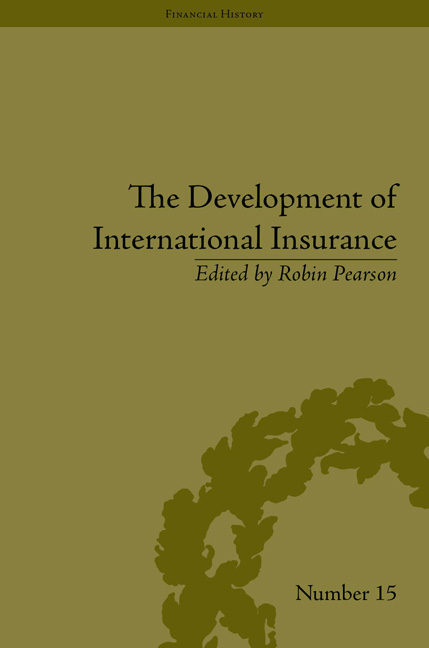Book contents
- Frontmatter
- CONTENTS
- Preface
- List of Figures and Tables
- List of Contributors
- Introduction
- Part I Non-Life Insurance
- 1 The Marine Insurance Market for British Textile Exports to the River Plate and Chile, c. 1810–50
- 2 Actuarial Practice, Probabilistic Thinking and Actuarial Science in Private Casualty Insurance
- 3 The Difficulties of Spanish Insurance Companies to Modernize during the Franco Years: The Mechanization of Administrative Tasks and the Introduction of the First Computers, 1950–70
- 4 Multilateral Insurance Liberalization, 1948–2008
- Part II Life, Health and Social Insurance
- Notes
- Works Cited
- Index
2 - Actuarial Practice, Probabilistic Thinking and Actuarial Science in Private Casualty Insurance
from Part I - Non-Life Insurance
- Frontmatter
- CONTENTS
- Preface
- List of Figures and Tables
- List of Contributors
- Introduction
- Part I Non-Life Insurance
- 1 The Marine Insurance Market for British Textile Exports to the River Plate and Chile, c. 1810–50
- 2 Actuarial Practice, Probabilistic Thinking and Actuarial Science in Private Casualty Insurance
- 3 The Difficulties of Spanish Insurance Companies to Modernize during the Franco Years: The Mechanization of Administrative Tasks and the Introduction of the First Computers, 1950–70
- 4 Multilateral Insurance Liberalization, 1948–2008
- Part II Life, Health and Social Insurance
- Notes
- Works Cited
- Index
Summary
Introduction
In 1997, Hans Bühlmann, one of the doyens of twentieth-century non-life actuarial science, gave a speech about the role of the actuarial profession. He stated that one of the oldest English life insurance companies, the Equitable Life Assurance Society, founded in 1762, ‘managed to weather all storms in good shape, and flourished, because of the scientific methods it employed’. Making the application of scientific methods the centre piece of explaining the success of the life insurance industry raises a question about non-life insurance, particularly given that Bühlmann argued that actuarial science only first gained effective influence over non-life actuarial practice in the 1960s and 1970s. The question is how did the different branches of non-life insurance manage to become successful insurance enterprises in the absence of scientific methods?
The cornerstones of the development of non-life actuarial science are known. Much less is known about the actuarial practice of the non-life insurance companies. In one of the first comprehensive textbooks on non-life actuarial practice, Max Gürtler noted in 1936 that most experts in non-life insurance had never seen a correct statistic during their career. He also stressed that most premium rates were not so much derived from any calculations as from mere intuitions and practical experiences. Keynes, for his part, famously poked fun at the seat-of the-pants methods that most insurance companies used to calculate premiums.
- Type
- Chapter
- Information
- The Development of International Insurance , pp. 37 - 62Publisher: Pickering & ChattoFirst published in: 2014



